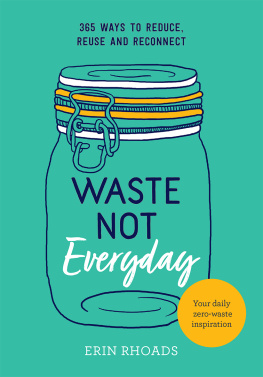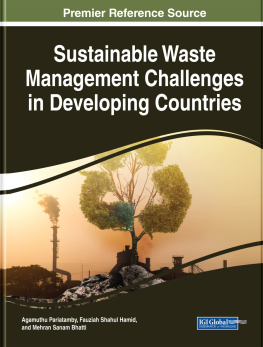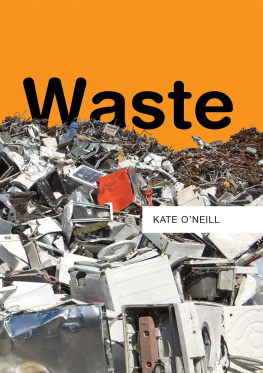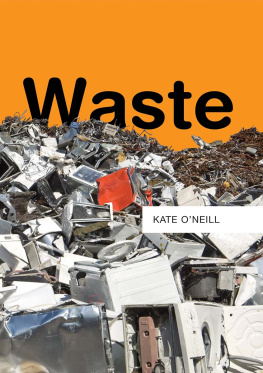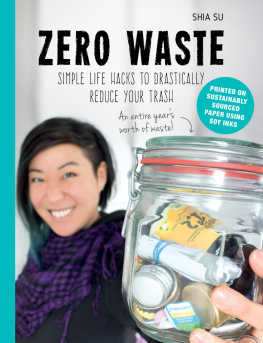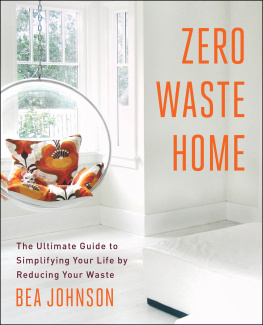The Early History of Zero Waste
In the early 1990s a group was set up in Manila that called itself the Zero Waste Recycling Movement of the Philippines. This little groupled by Luz Sabaswas remarkably creative in the ways it found uses for every scrap in the waste stream. Roof tile was made from tin cans, curtains were made from drinking straws, compost kits were made from car tires, and even a pesticide was made from cigarette butts. However, few people outside the Philippines heard about their efforts. Even among other environmental groups in the Philippines their message gained little traction as it was not seen as a practical way of convincing government officials not to build incinerators. The major push for the notion for zero waste as a serious alternative to landfills and incinerators had to wait for developments elsewhere.
The Convergence of Two Ideas
In his book The Ghost in the Machine the late author Arthur Koestler discusses a common feature of the creative and discovery processes whether in humor, art, or science. He coined a term called bissociation. By this he meant the intersection or collision between similar ideas from two different frames of reference.
So what were the two ideas that came together to produce zero waste? In this case the two ideas were very similar but were being developed in different frames of reference and in different placesin fact as far away from one another as you can get on our planet.
In the 1980s in Berkeley, California, Daniel Knapp started a small operation scavenging discards from the landfill. By the 1990s this had developed into a major reuse and recycling operation, Urban Ore. In the process Knapp came up with the notion that all discards could be divided up into twelve major categories. This further evolved into purposely designed ecoparks where the twelve categories could be efficiently collected, processed, marketed, or used on-site. Based on these discard categories he argued for total or 100 percent recycling. Many thought that this was an impossible goal and that it was totally unrealistic to talk about it.
Meanwhile, at the other end of the world the leaders of Australias capital city Canberra were meeting with citizens to discuss how to minimize the flow of waste to their landfill. When the politicians asked the citizens how much waste they felt should be going into the landfill, they said, None! Such a position was based more on a feeling of moral obligation than a realistic analysis of what was achievable. Remarkably, however, the politicians accepted the challenge and thus was born what eventually became the No Waste by 2010 law, which was passed by the Australian Capital Territory (ACT) government in 1996.
But the concepts of total recycling and no waste by 2010 began to merge into zero waste a year before this landmark legislation, when Knapp was invited to Australia to share his ideas. There he presented slide shows from dawn to dusk in Canberra and Melbourne on both reuse and on total recycling, explaining his twelve master categories and sharing drawings of ecoparks designed to handle all of these twelve categories. He was also taken to look at a reuse operation, called Revolve, at a landfill. Like Knapp, his hosts saw the merits of scavenging waste, sorting it, and reusing it. The meeting was an important verification for both Knapp and the Revolve workers that they were on the right track.
Knapp was a master of reducing and reusing waste, but the idea of getting to no waste in a short time frame was intriguing for more than one reason. The thing that fascinated me at the time, he says, was that the zero waste idea, even though first enunciated by citizens acting through Revolve, was being most effectively championed by a bunch of bureaucrats on the eighth floor of a government building in Canberra. It was they who drafted the legislation No Waste by 2010 that went to Parliament and was passed in 1996. Those officials had even hired an engineering consultant to draft a plan for an impressive-looking resource recovery park. Revolve, too, had already drafted a plana much more practical design based on their idea of maximizing the recovery of discarded resources.
Knapp and the Australians exchanged copies of their concepts and site plans, and Knapp came home and shared them with a leading landfill opponentactivist Bill Sheehan. Sheehan had recently helped to set up the GrassRoots Recycling Network (GRRN). He thought the fact that the ACT government was backing zero waste was big news and put out word over the Internet. The message that Australians were endorsing zero waste went viral back in the United States, and the concept gained popularity. Says Knapp, I found it was a lot easier to sell zero waste than total recycling.
Back in California, Knapp and others began to make tremendous strides with zero waste. Ironically, though, the news from Australia took a turn for the worse. Knapp continued to make trips to Australia to collaborate. But he recalls, All the people I had been talking with in Canberra up until about 2000 were swept out of power when a new party took control of government. What makes me most upset about this is that Revolvethe plucky little nonprofit refuse operation closest to Urban Ore in structure of any company I ever visitedwas driven into bankruptcy.
Knapp remains puzzled to this day why his idea of total recycling did not catch oneven with activistswhile zero waste was embraced by all and sundry. So what was the difference? Why was one message largely ignored while the other spread rapidly through California and beyond? Knapps story highlights two reasons: the fact that the ACT government endorsed zero waste and passed a law to accomplish it, which suddenly brought the matter from the realm of fantasy into reality; and the fact that the idea was raised on the Internet, which by the mid-1990s was gaining considerable traction among grassroots activists as both an educational and activist tool.
But there are other factors, too. Total recycling implies that the community has to take on the whole waste problem by themselves; the responsibility to recycle everything lies with them. On the other hand the zero waste philosophy recognizes that communities cannot get rid of waste alone. They need industrial help in the form of industrial responsibility. We have to redesign the things that we currently cant reuse, recycle, or compost out of the manufacturing system.
Timing was also critical. The ground was particularly fertile for the zero waste message to spread in California in the mid-1990s. If it had reached there a decade before, when plans to build thirty-five incinerators were being debated, I think the idea would have been dismissed out of hand. By the same token, if the message had been brought to Canton, New York, in 1985where I was residing and had begun the campaign to fight a local incinerator proposalthe idea would also have been laughed out of court. I vividly remember one member of the county solid waste team shouting down the phone at me in 1985, Paul, if you talk about more than 15 percent recycling you are going to lose all your credibility!
But by 1995, California had only built three of the thirty-five proposed incinerators and there was no way that the public would accept any more. Meanwhile, landfills were being sited further and further away from urban centers, with transport costs and tipping fees rising.
In 1989, the California legislature had passed a law requiring all communities to divert 25 percent of waste from landfills by 1995 and 50 percent by 2000. By 1995, many communities had achieved this goal and were saving money in the process. Both citizens and decision makers were asking why they should stop at 50 percentwhy not even higher? Thus, there were many people in Californiaincluding decision makersprimed to accept a zero waste message.
Zero Waste Fits Well with Many Other Trends
Next page

